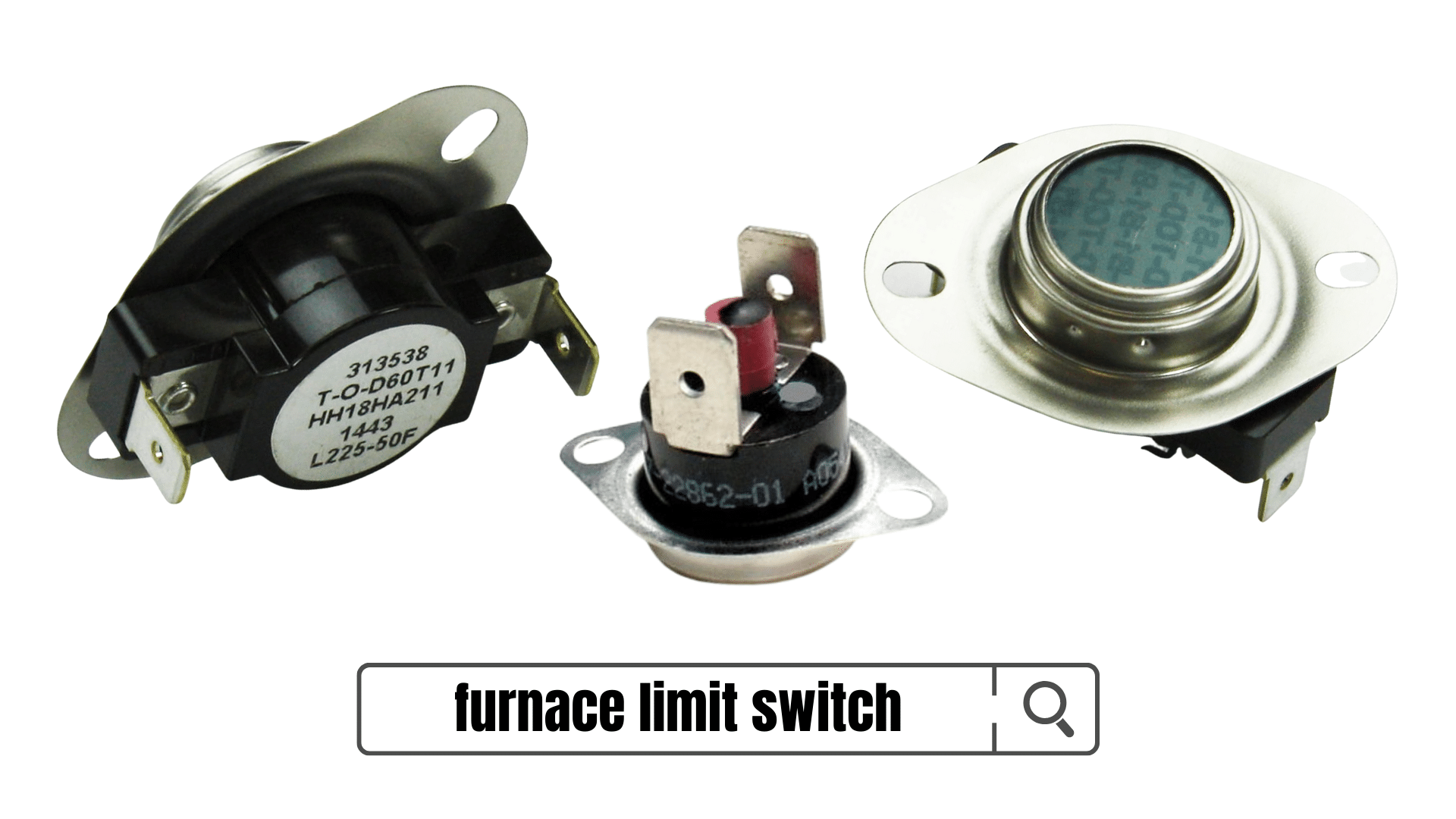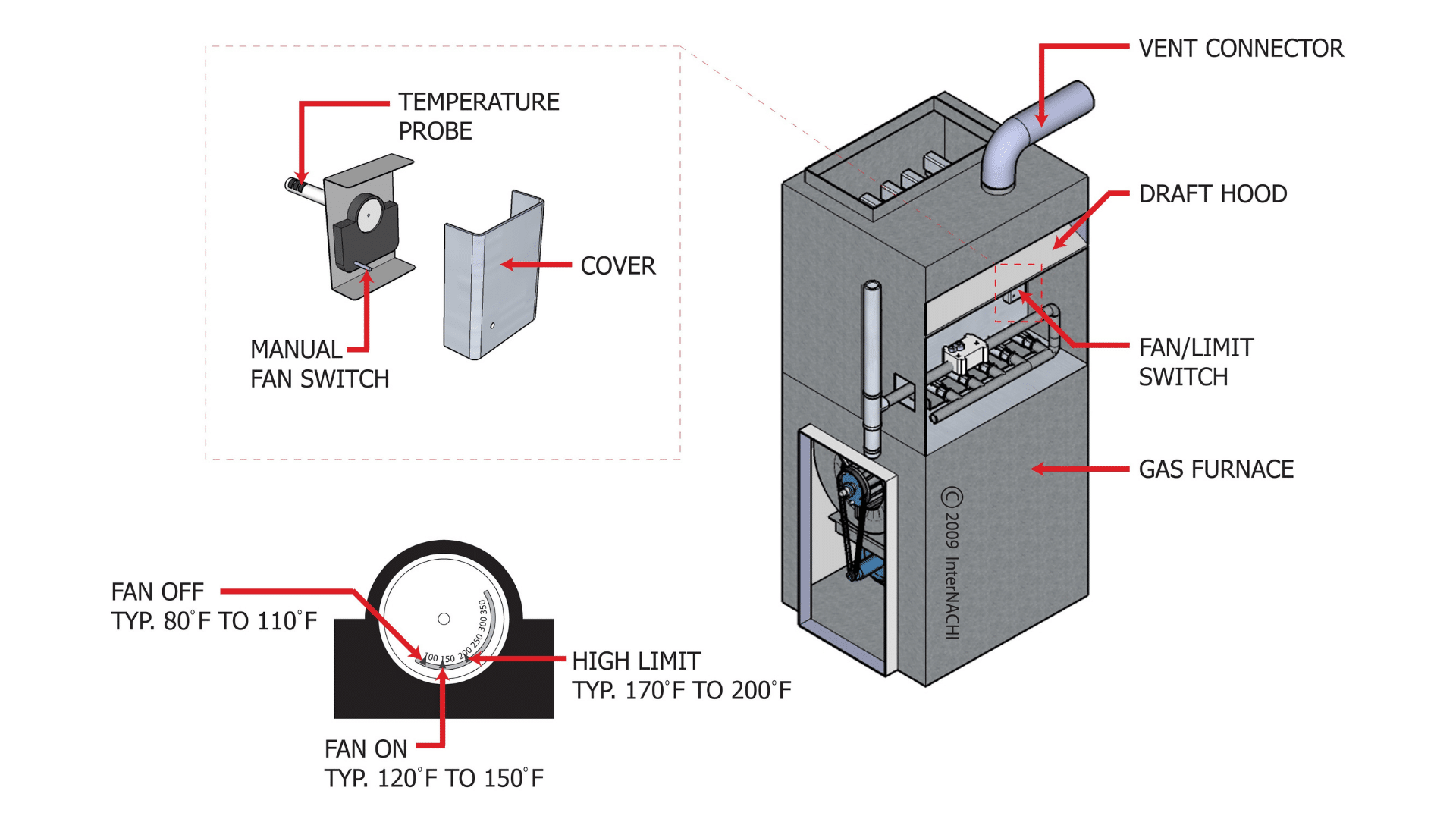Every time you turn on the furnace, the burning gas always presents the likelihood of overheating. Furnaces are equipped with a high-limit switch to protect your property from any related damage. (Related: What is Forced Air Heating? Here's Everything You Need To Know)
So, what does it do? The high limit switch is designed to shut off the gas once the temperature inside the plenum (located above the heat exchanger) exceeds a specific pre-set value.
Additionally, modern furnaces also have a fan limit switch– which prevents the blower from bringing in cold air indoors. It is typically open and closed if the temperature reaches its pre-set setting.
Separate vs. Combination Limit Switches
Some furnaces have separate switches for each, but it's common for modern furnace units to have a combination switch that has both functions. It is usually located near the burner housing's side, above the heat exchanger. You can easily access the switch after removing the furnace cover.
Suppose you are having furnace malfunction problems. In that case, it may suggest a faulty limit switch (if it's not operating normally). If it is, the underlying issue may be something else.
Fortunately, it is a DIY-friendly task to test a limit switch as long as you have a multimeter and a screwdriver at hand. It can be easy to replace after confirming you have a faulty switch.
What Does a Limit Switch Look Like?
Generally, furnace limit switches are available in two varieties.

Both switches are mounted on plates onto the burner housing, AKA the flat metal plate you first see upon removing the furnace cover. Electro-mechanical limit switches are designed with a dial, allowing you to adjust the temperature when the fan limit switch starts the blower and when the high limit switch powers off the gas.
Note: The adjustment dial isn't found on standard solid-state switches, as this type is pre-set and has a reset button. If you need to replace it, the replacement needs to match the pre-set value.
A limit switch's plate typically consists of two or four-wire terminals. A fan limit switch requires a pair of 120-volt terminals (for a seamless connection to the furnace blower and control panel). Meanwhile, you'll need a couple of 24-volt terminals to connect the high limit switch and the gas valve.
Diagnosing Overheating Problems
An overheated furnace limit switch usually happens for these reasons.
How to Troubleshoot Limit Switch Problems
If you want to troubleshoot common limit switch problems, you will need to know what you're looking for.
Other Expert-backed Tips:
What does the Limit Switch do?
If you’re wondering about the role of a limit switch in the furnace, it can bring comfort and safety into your home.

Once it senses a different furnace temperature, it instructs the blower fan to turn on or off as needed– depending on your pre-set temperature value. It can also tell the furnace to shut down if it overheats, such as when a dirty air filter restricts the airflow. This makes it an important safety feature.
Provides Comfort
When the furnace blowers and burners function simultaneously, the system typically pumps cold air throughout the home. Since the air in the plenum isn't warmed enough, it needs heating. As such, the limit switch turns off the blower fan to ensure maximum indoor comfort.
Safety Device
A furnace limit switch also acts as a safety device, as it shuts down the gas supply to the furnace burners to prevent overheating. Once the heat exchanger gets too hot, it may crack the heat exchanger pipes and thus ruin the furnace.
Important note: If a heat exchanger cracks, toxic carbon monoxide can leak into the air inside the home– putting you at risk.
When to Replace a Furnace Limit Switch
If you're dealing with a faulty limit switch, a local furnace repair professional can replace it with a new one. Homeowners who want to attempt a DIY replacement must sufficiently understand electrical issues and how to use a multimeter.
Usually, the repair requires you to disconnect and remove the switch so you can check it for continuity. If the multimeter shows infinite resistance, the switch may be beyond repair. You need to consider replacement– which involves inserting a new limit switch, attaching the screws, and reconnecting the wires.
Pro tip: Remember to buy a limit switch with the same temperature range and voltage ratings for those planning to do a DIY replacement.
Unfortunately, some tests prove impractical even if they give out some helpful information. Case in point: Doing a continuity test on the high limit switch when the furnace shuts off may hint that it's opening at a lower temperature than usual.
The good thing is, the switch in itself won't cost you much. It is relatively more straightforward (not to mention– safer) to replace the limit switch than repairing a hot furnace.
Frequently Asked Questions (FAQs)
How much does it cost to replace the Furnace Limit Switch?
A quick online browse will tell you that a standard furnace limit switch costs between $4 and $25. Ideally, every part must be OEM, though some furnaces can still work with universal switches.
Can a Furnace Limit Switch be bypassed?
Yes, however, it is not recommended to do. Bypassing things in your home's heating system may create possible dangers and safety hazards. There is no good reason to bypass a furnace limit switch because they are inexpensive when it's time for a replacement. Fortunately, furnace limit switches come cheap and are designed for the consumer's protection.
Can I buy a different furnace limit switch than the original for replacement?
It is not ideal to buy a different furnace limit switch. Always use a part similar to the original one when replacing it. Each switch will display the cut-in and cut-out temperatures, and your new control must show the same temperatures. If the level reads L210, the limit also should be cut off at 210 degrees. Using a switch with different cut-in and cut-out temperatures may result in your furnace not working correctly or may eventually be damaged. Worse, the furnace may release hazardous fumes in the furnace room with deadly carbon monoxide if your furnace overheats and the housing of your burner cracks.
